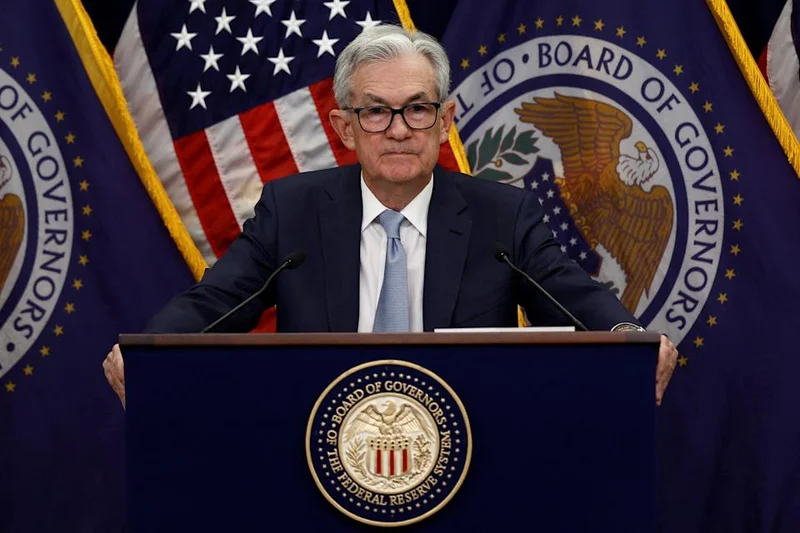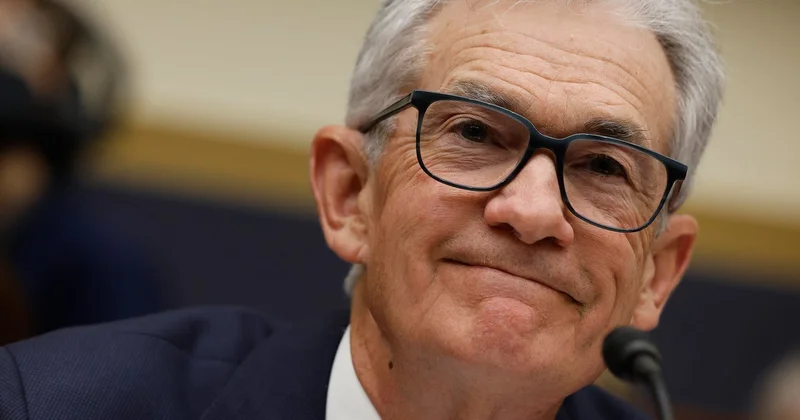The Fed's Latest Rate Cut: What It *Really* Means for the Future of Innovation
The Federal Reserve is flying blind.
That’s not my assessment. That’s the word on the street from economists watching the institution tasked with steering the largest economy in human history. The recent government shutdown starved the Fed of its most basic data, forcing it to make critical decisions about interest rates without its usual dashboard of official job reports. Imagine a pilot trying to land a 747 in a storm with half the instruments blacked out. That’s the picture we’re looking at.
But I think this moment reveals something much deeper, something far more profound than a temporary data drought. What if the instruments themselves are obsolete? What if the very model of economic navigation we’ve relied on for a century is fundamentally breaking down in the face of 21st-century complexity? The Fed just cut its benchmark interest rate for the second time this year, a quarter-point slice meant to jumpstart a slowing labor market (Fed cuts interest rates for 2nd time this year, but rejects large reduction sought by Trump). It’s a classic move, a pull on a familiar lever. Yet, looking at the chaos surrounding the decision—the political pressure, the contradictory economic signals—it feels less like a confident maneuver and more like a desperate guess.
We’re watching an institution built for a predictable, mechanical world try to operate in an age of chaotic, networked systems. And I believe this friction, this sense of "flying blind," isn't a bug. It's the key feature of a new economic era, and it’s forcing us to ask a much bigger question: Are we ready to build a whole new cockpit?
The Ghost in the Machine
Let’s break down the mechanics of what just happened. The Federal Reserve, led by Jerome Powell, lowered its key interest rate to a range of 3.75% to 4%. The stated goal is to combat a cooling labor market, where job gains have slowed and unemployment has "edged up." But here’s the rub: at the same time, inflation is still ticking along above the Fed’s 2% target. This puts the central bank in an impossible bind, facing the risk of "stagflation"—in simpler terms, it's that nightmare scenario where prices keep rising while people are losing their jobs. Lowering rates to boost hiring could pour fuel on the inflation fire. Raising them to fight inflation could tip the economy into a recession.
It’s a tightrope walk over a canyon, and the whole world is watching.

But this isn't just an economic puzzle. It's a political battlefield. The pressure campaign from President Trump has been relentless and utterly without precedent. He has publicly called for massive rate cuts, attempted to fire a board member, Lisa Cook, and installed a close economic advisor, Stephen Miran, who promptly cast the lone vote for a much larger half-point cut. When I first read the details of the legal battle to keep Cook in her post, I honestly felt a chill. This isn't just a policy disagreement; it's an attempt to hack the core operating system of our economy for short-term political gain, treating the Fed's independence like a software vulnerability to be exploited.
This chaotic blend of sluggish data, contradictory economic goals, and brute-force political interference is the new normal. The Fed is no longer just solving an equation. It’s trying to land that 747 while passengers are fighting for control of the yoke. Powell himself seems to acknowledge the uncertainty, casting serious doubt on whether another cut will even happen in December, calling it "far from a foregone conclusion" (Fed cuts rates again, but Powell raises doubts about easing at next meeting). The markets dipped on that news, craving a certainty that the Fed simply cannot provide. And why can't it? Because the map it's using no longer matches the territory.
It’s Time to Upgrade the Operating System
Our entire framework for monetary policy is a relic of the 20th century. It’s like using a sextant in the age of GPS. The Fed makes a move, then waits weeks, sometimes months, for lagging indicators like the official jobs report to see what effect it had. The fact that a government shutdown could blind them highlights the absurdity of the situation. In an era where private firms like payroll processor ADP can issue jobs data in near real-time, our nation’s top economic minds are left waiting for a report that’s already a month out of date.
This is the kind of breakthrough that reminds me why I got into this field in the first place—the potential to redesign these legacy systems. Imagine if we had real-time, privacy-protected economic indicators flowing into a central dashboard, updated by the minute, not the month—we could build predictive models that see downturns coming weeks in advance, allowing for micro-adjustments instead of these clumsy, reactive rate cuts that feel like trying to steer an ocean liner with a canoe paddle. We could see the impact of tariffs on consumer prices not as a vague fear, but as a measurable, trackable data point rippling through the economy.
What if we could model our economy with the same sophistication we use to model weather systems or neural networks? What new tools could we invent beyond the blunt instrument of interest rates? These aren't science-fiction questions anymore. The data exists. The computing power exists. The analytical talent exists. The only thing missing is the will to overhaul a system that is so clearly straining at the seams.
Of course, a data-driven economy comes with immense responsibilities. We would have to build in safeguards against bias, ensure transparency, and fiercely protect individual privacy. The debate over who controls the algorithm would become one of the most critical ethical conversations of our time. But avoiding that conversation by sticking with an outdated, failing system is no longer an option. The world has become too fast, too complex, and too interconnected for us to keep flying blind.
We Need a Better Dashboard
The fierce debate over a quarter-point rate cut is a monumental distraction. It’s like arguing over the font choice on a warning light while the plane’s engine is on fire. The real story isn’t Powell versus Trump, or doves versus hawks. It’s the sputtering of a 20th-century machine trying to navigate the breathtaking complexity of the 21st. We don't need slightly better guesses from the Fed; we need to give them, and ourselves, a fundamentally better view of reality. The solution won't come from tweaking a rate here or there. It will come from the innovators, the data scientists, and the systems thinkers who can build the next-generation tools we so desperately need. We shouldn't be afraid that the pilot is flying blind. We should be thrilled by the opportunity to build a whole new dashboard.
Related Articles
Federal Reserve News: Rate Cut Speculation vs. Supervisory Rating Changes
Fed's Mixed Signals: Is a December Rate Cut Really on the Table? Stephen Miran's call for further ra...
